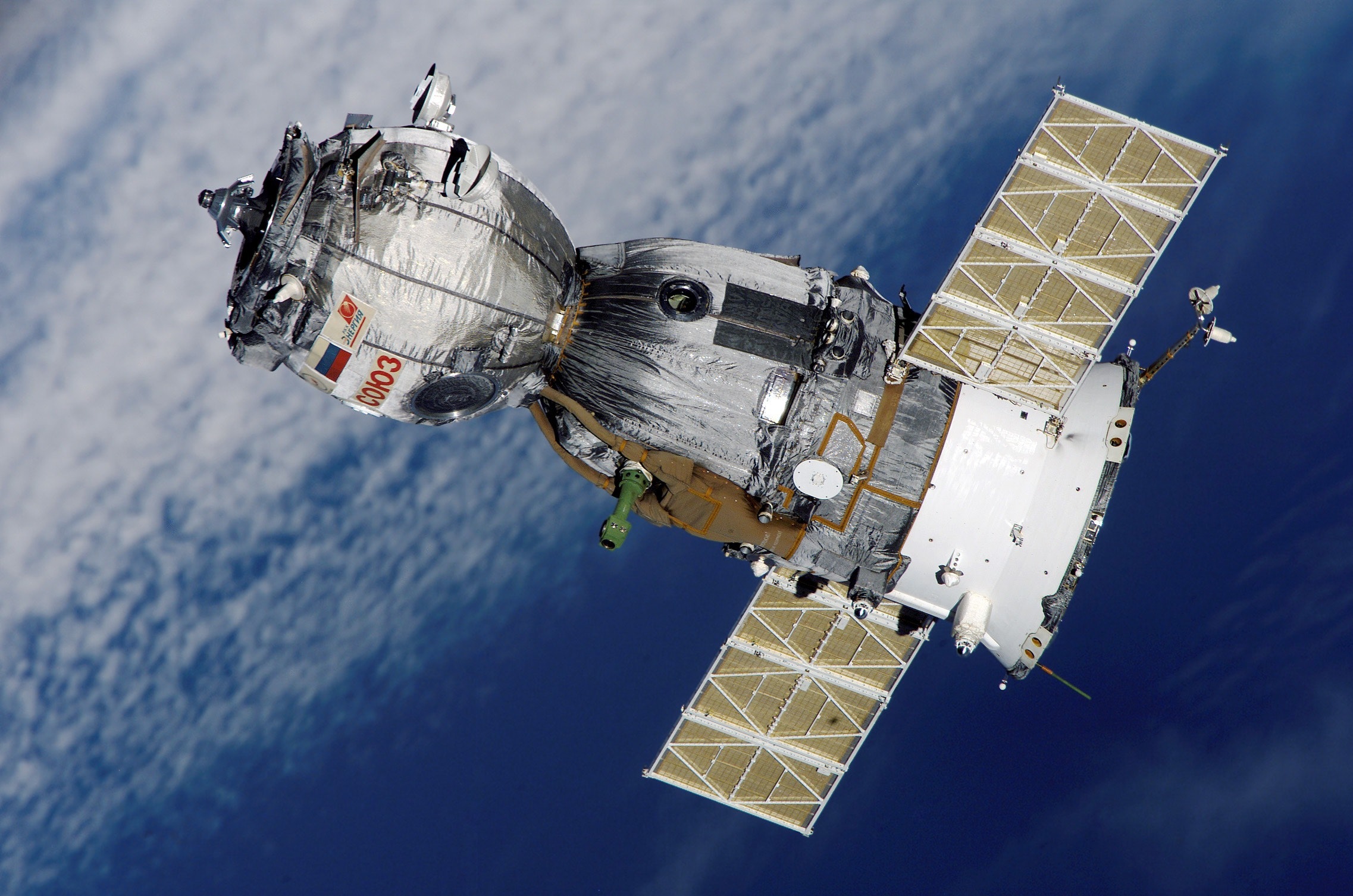
Like the first Canadarm, Canadarm2 will be a prestigious Canadian contribution to the international space program, an essential tool without which the Space Station could not be assembled and maintained.
Making its first moves when it was installed in April 2001, Canadarm2 has given an impressive demonstration of the advancement of robotics. Unlike the original Canadarm, Canadarm2 is not permanently anchored by one of its ends. Both ends have a locking effector (LEE) that can be used as an anchor point while the opposite end performs various tasks, including gripping an electromechanical terminal (PDGF) on the Station. This concept allows Canadarm2 to move around the Station like a spanner caterpillar, by fixing its ends in turn to the electromechanical terminals (PDGF) distributed at various points on the exterior walls of the Station.
It is a simple and elegant concept, but its practical realization was a real challenge. The Space Station is very large and it is very important to ensure good mobility – the ability to move the arm from one place to another.
Another difficult task was to make Canadarm2 capable of withstanding the forces imposed by its launch. Bigger and heavier than the shuttle Canadarm (its mass is approximately 1641 kg compared to 410 kg for the original Canadarm), it was subjected to greater pressures during the eight and a half minutes required to arrive. in orbit. The first Canadarm, which is Canada’s best-known technology, and Canadarm2, Canada’s new cutting-edge robotics technology, will work together during the construction of the Space Station, passing payloads from hand to hand. Canadarm2 is more flexible because the number and location of its joints gives it seven degrees of freedom, rather than just six. So he has more ability to bend and swivel and can handle easily in hard-to-reach places. Thanks to its ability to pivot almost all of its joints, it is even more agile than a human arm. This capability is critical because the Space Station is a larger and more complex operating environment than that of the Shuttle.
This flexibility will be greatly increased by the Canadian Space Agency’s Specialized Agile Remote Manipulator (SPDM), the Canadian “hand”, which is a smaller, highly evolved robot with two arms having 15 degrees of freedom. It is currently scheduled for launch in 2003. The SPDM has sophisticated hands capable of handling special tools during delicate maintenance tasks. Both Canadarm2 and the Canadian “hand” send information about the forces and movements they undergo and perform while working, resulting in a “feel” capability similar to that of the human hand. Thus, they allow us to reduce the time spent by astronauts in the harsh and dangerous environment of space.
What gives Canadarm2 and SPDM so much importance is that most of the equipment that will be installed outside the Station will consist of In-Orbit Replaceable Units (ORUs), which are stand-alone assemblies that can be exchanged for new units in the event of wear or failure. The entire design of the Space Station is based on UROs that can be repaired or maintained in space. Canadarm2 is not excluded – all of its components are replaceable in orbit. Unlike the original Canadarm, it will likely never return to Earth.
Astronauts on the Space Station will control Canadarm2, but like Shuttle astronauts, they will be in constant contact with Mission Control. Here again, Canada will have its role to play. The Canadian Space Agency has built a control center for Canadarm2 at its headquarters in Saint-Hubert, Quebec, which will link directly to NASA’s Mission Control at Johnson Space Center in Houston.
With its half-dozen mission control-like computer consoles in Houston, the Space Activity Support Center will serve as a technical support center and provide logistical and operational support in real time while Canadarm2 performs tasks in space. Canadarm2’s performance will be monitored by the operations control room and analyzed by robotics specialists from the Canadian Space Agency, who will always be ready to respond to problems that astronauts cannot resolve by following procedures. normal.
Comparative grid of Canadarm and Canadarm 2
| Canadarm | Canadarm 2 | |
| Free function degrees | 7 degrees | 6 degrees |
| Joint rotation | Limited elbow rotation (limited to 160 degrees) | Complete rotation of the joints. The joints (7) rotate 540 degrees. Greater range of motion than a human arm. |
| Length | 15 meters | 17 meters |
| Mass | 410 kg | 1641 kg |
| Diameter (External diameter of composite beam) | 33 cm | 35 cm |
| Operation speed | Without load: 60 cm / s Loaded: 6 cm / s | Without load: 37 cm / s Loaded: 2 cm / s (station assembly); 15 cm / s (support of EVA); 1.2 cm / s (Orbiter) Stopping distance under maximum load: 0.6 m |
| Composition | 16 layers of high modulus carbon fiber – epoxy resin | 19 layers of high strength carbon fiber – thermoplastic |
| Cameras | 2 (one on the elbow and one on the wrist) | 4 color cameras (one on each side of the elbow, and two others on the LEE) |
-
Recent Posts
- ASSEMBLY PHASES
- Basic central structure, Mobile transporter (MT)
- CANADARM 2
- Destiny module
- Exit airlock (End of the initial phase)
- Expedition 1
- Expedition III, Logistics
- Expedition IV, Logistics
- External structure
- Home
- Logistics
- Logistics II
- Logistics III
- MPLM Leonardo
- MPLM Mobile Base (MBS)
- MPLM Raffaello and Canadarm2
- NORTHERN LIGHTS
- Solar panels
- Unity module
- Zarya Control Module
- Zvezda module
Archives
Categories
Meta
